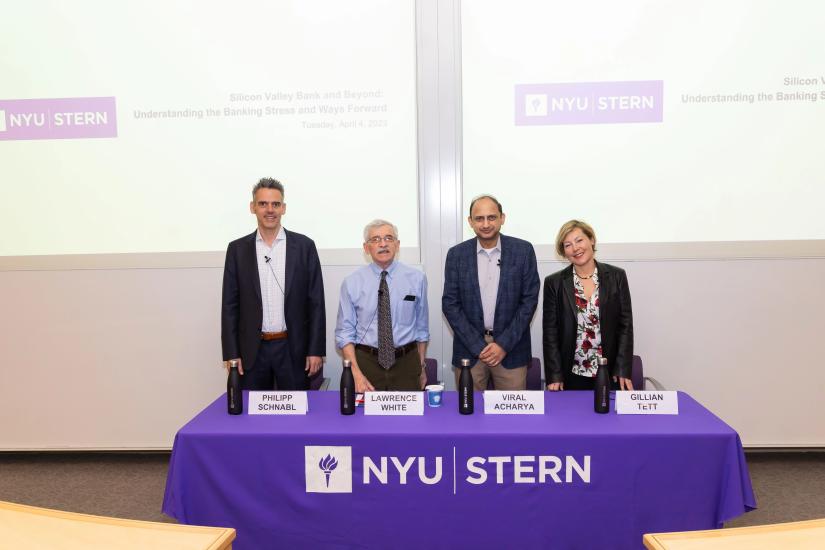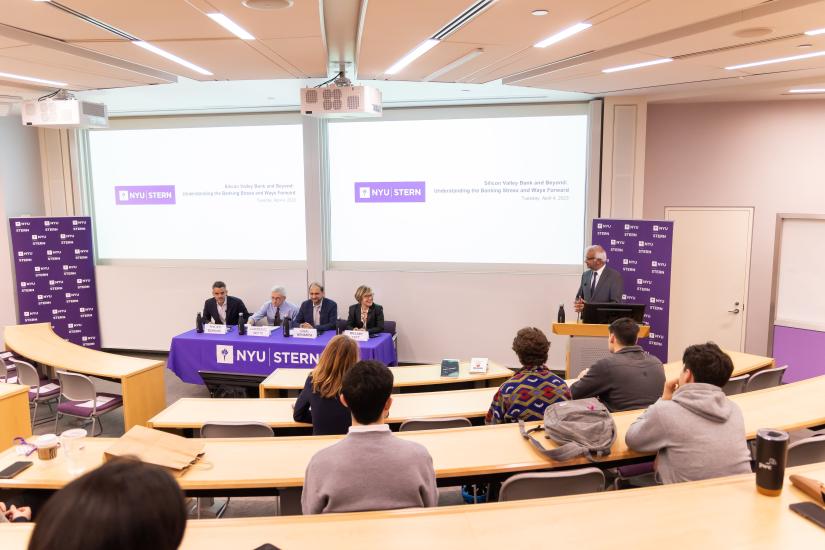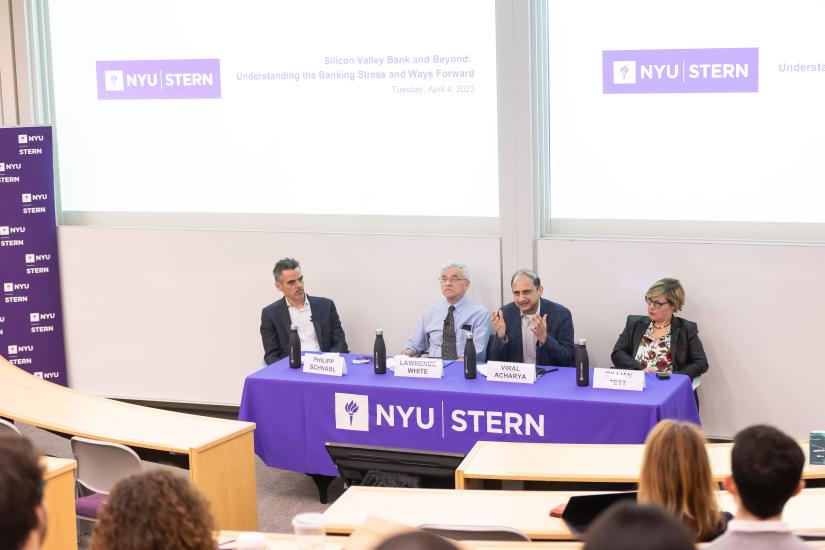Silicon Valley Bank and Beyond: Understanding the Banking Stress and Ways Forward
With the dust far from being settled after the collapse of Silicon Valley Bank and Signature Bank, a run on First Republic, and Credit Suisse effectively failing and being taken over by UBS – the first merger of global systemically important financial institutions – NYU Stern’s leading economics and finance scholars continue to drive the dialogue on this topic, and reconvened for a second panel discussion on “SVB and Beyond: Understanding the Banking Stress and Ways Forward.”

(l-r Professor Philipp Schnabl, Professor Lawrence J. White, Professor Viral Acharya, Gillian Tett, Chair of the Editorial Board and Editor-at-Large, US, Financial Times; Provost-designate of King's College, Cambridge)
Introduced by NYU Stern Dean Raghu Sundaram, the panel included thought leaders who contributed to Restoring Financial Stability (2009), Regulating Wall Street (2010), and Guaranteed to Fail: Fannie Mae, Freddie Mac and the Debacle of Mortgage Finance (2011), and whose recommendations influenced the enactment of the Dodd-Frank Act:
- Viral Acharya, C.V. Starr Professor of Economics, NYU Stern; Member of the Financial Advisory Roundtable (FAR) of the Federal Reserve Bank of New York
- Philipp Schnabl, Martin J. Gruber Professor in Asset Management, Sidney Homer Director of the Salomon Center for the Study of Financial Institutions, NYU Stern; Research Associate in Corporate Finance at the National Bureau of Economic Research; Research Affiliate in Financial Economics at the Center for Economic and Policy Research
- Lawrence J. White, Robert Kavesh Professor in Economics, NYU Stern; former Board Member, Federal Home Loan Bank Board; former Board Member for Freddie Mac; former Director of the Economic Policy Office, Antitrust Division, US Department of Justice
Gillian Tett, Chair of the Editorial Board and Editor-at-Large, US, Financial Times; Provost-designate of King's College, Cambridge, moderated the discussion.
Ms. Tett framed the discussion by noting that “idiosyncratic” is the “new buzzword or mantra from all the big banks who survived and the ones who actually, in some, cases are thriving,” and that arguments have been made that the current banking crisis is due to “idiosyncratic factors, a few bad apples, and the system is basically fine.” She also posed questions about “the impact of social media and virality” on the crisis and if there is “any way to stop social media being an issue, because the Fed is doing a lot of thinking about this.”
Professor Viral Acharya: “Social media is a fact of life, but the bigger issue is why are things happening on this scale with regard to the uninsured deposits of banks. That scale is related to the scale of Fed's quantitative easing. With regard to bank runs, there is more going on than just interest rate hikes. There is weakness in several sectors of the economy, notably tech, crypto and commercial real estate, that is also playing out. The risk we need to stress-test banks for, in my assessment, is one of stagflation.”
Professor Philipp Schnabl: “By the time you get to a run, the game is almost over. Social media was a front row seat this time to see how it works, but I’m not sure it’s the culprit.”
Professor Lawrence J. White: “The American banking regulatory system is fragmented. That can be a good thing, because then there are multiple places where good ideas can flourish. On the other hand, there are multiple places where things can go wrong. I wouldn't want a single regulator, because then when things go wrong it’s really a problem.”
View panelists’ recent comments in the media here:
- Viral Acharya in The Hill
- Philipp Schnabl in The New York Times
- Lawrence J. White in The Financial Times
Watch the video from the event on March 20, 2023: “Silicon Valley Bank: What’s Next for Banks”


